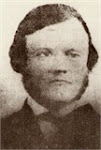Some of the major recommendations for intersection improvements (all intersections are with East Broadway) are described below. No major changes to E. Broadway itself are recommended.
Monona Drive. Extend the
"Copps Avenue. Construct a roundabout."Actually, the study presented a roundabout option (with two alternative designs) and a traffic signal option. Neither was preferred over the other. Rather the report presented recommended improvements for each option.
At the council meeting on Monday, it became clear to me at least, that the traffic signal option is clearly preferable. It costs much less, can be fully implemented this year, will work better with the traffic lights at Stoughton Road, and critically it will create needed traffic gaps for vehicles exiting the new developments.
"These gaps will provide access to East Broadway from the future Whitehorse Commons
Development, UW Clinic and Copps Avenue."
















Doug, thanks for the clarifications. I, too, want to clarify and highlight my concerns about our decision-making process. The only "costs" being compared or considered to date are construction costs. An analysis done by the Public Work Dept for the City of Topeka Kansas in July 2010 provides some important additional data which should be factored into our decision. (see "Roundabouts v. Signalized Intersections: a Comprehensive Analysis" by Scott Alisoglu)
ReplyDelete1. Traffic signals cost money to service and power. Estimated by Topeka at $3000 a year over the 30 year life of an intersection, add $90,000 to the cost of signals versus a roundabout (a roundabout has no signals to power or maintain- the bid we have is $125,000 for the equipment, installed, but does NOT consider maintenance costs, which are paid by the taxpayer every year)
2. With 40% fewer crashes and 80% fewer injury crashes, we can expect a roundabout with 15,600 vehicles/day to save about $200,000 over 30 years in property damage only (PDO)crashes, and $3 million dollars in injury/fatality costs, using average costs provided by the Insurance Institute for Highway Safety. Highway fatalities have been falling for 6 years nation-wide, and one of the reasons is the growing use of roundabouts.
3. By reducing idling and stops at signals, roundabout reduce fuel consumption by approximately 30%, which equals $218,577 in annual fuel costs, with fuel at $3.60/gallon, based on traffic volume of 15,600 ADTT. Carbon emissions are also reduced.
4. An intersection or roundabout will likely remain for 30 years, so the negative impact of waiting one year versus the potential benefits for the remaining 29 years is important for taxpayers, motorists, and the businesses along Broadway. While I understand the urgency, I think we still need to act based on the long-term best interests of the taxpayers and citizens of Monona.
To summarize, the construction estimate for the signals saves the city about $250,000 in one-time construction costs, but then adds costs of $3000 in annual maintenance, over $100,000 in accident related damage, injury, death and hardship, and over $200,000 in annual fuel costs due to idling and delays, plus the value of lost time and environmental costs of added pollution.
The roundabout would probably need to be shifted to the north to avoid wetland issues, but this is possible with a three-road design, right?. Perhaps the Stoughton road issues trump all of this, but I think we should be considering these other costs, since these costs impact taxpayers just as much as the costs to simply build the road. I also confess that my "statistics" above based on the Kansas study, adjusted for different traffic volume at our Copps intersection. Maybe my stats are screwed up, but I would like to see data like the Kansas study presented to our council for consideration, since the cost to use something has to be added to the cost of building something, to make informed cost-benefit decisions.